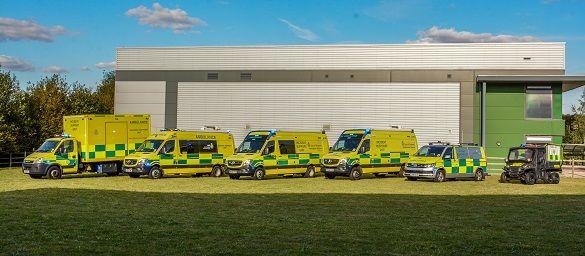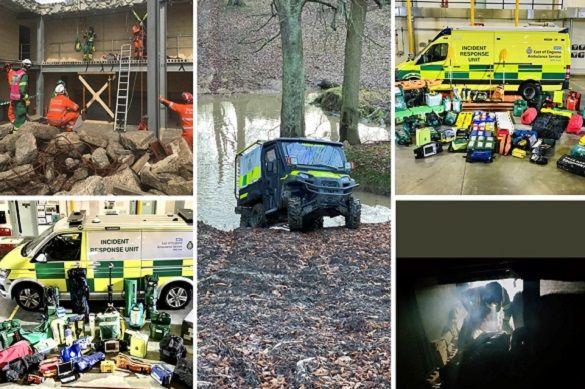Hazardous Area Response Team
Our Hazardous Area Response Team (HART) provide NHS paramedic care to any persons within a hazardous environment that would otherwise be beyond the reach of NHS care.
This includes the provision of NHS care within the inner cordons or hot zones of incidents.
These areas are divided up into the following categories:
- HAZMAT/CBRNe
- High Consequence Infectious Disease
- Confined Space
- Safe Working at Height
- Unstable Terrain
- Water Operations
- Support to Security Operations
- Marauding Terrorist Attacks (MTA)
Within the EEAST we have 98 paramedics split between our two HART bases in Essex and Cambridgeshire. There are always two teams on duty providing a response to the east of England region.

HART Vehicles
HART is governed by the National Ambulance Resilience Unit (NARU) and EEAST HART was formed in 2009 and went live in April 2010. HART must provide, within 30 minutes, a response to mutual aid requests outside of the EEAST. Each of Englands ten NHS ambulance Trusts have at least one HART unit, which means HART can work together across the country.
HART Training
Each HART paramedic starts life as a paramedic on an ambulance or response car. After they have gained a minimum of two years operational experience in A&E operations, they can apply for HART and if successful attend the following training:
- Breathing apparatus course (two weeks)
- Incident response unit course (four weeks)
- Safe working at height (two days)
- Confined space (three days)
- Off road driving (two days)
- Swift water rescue (one week)
- Urban search and rescue (two weeks)

